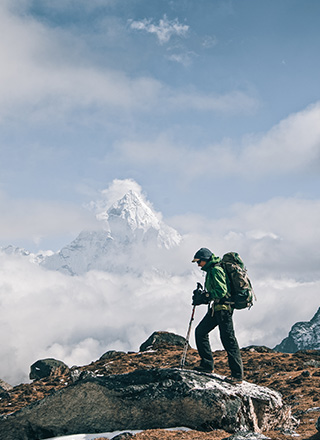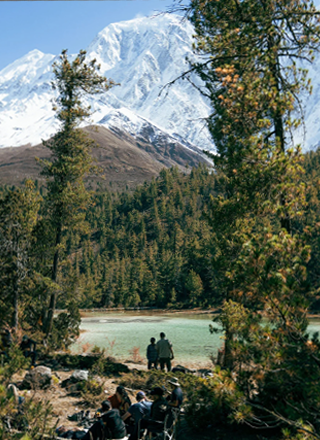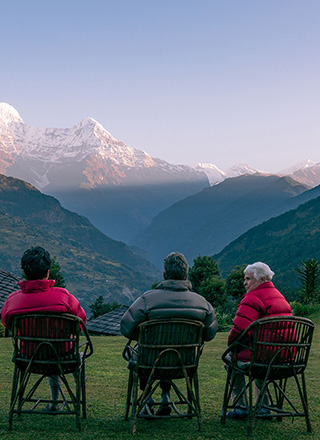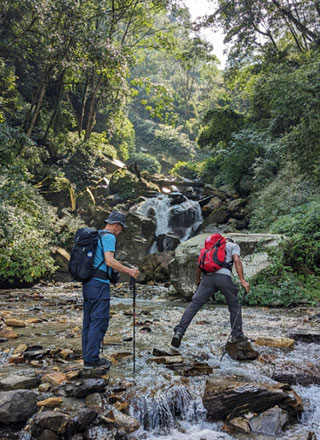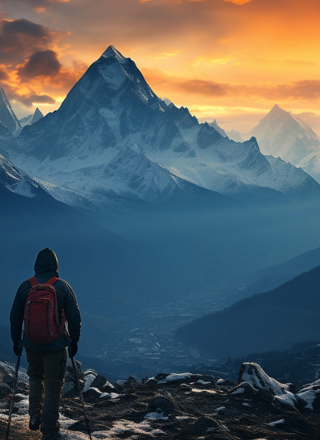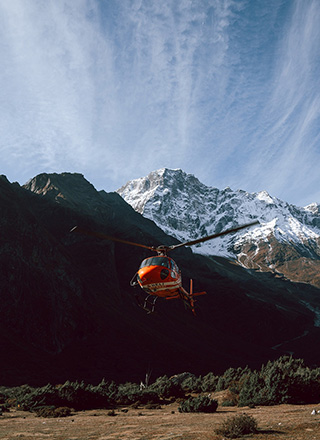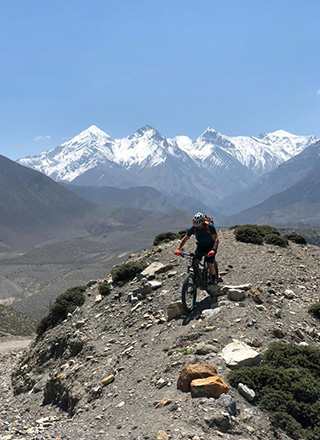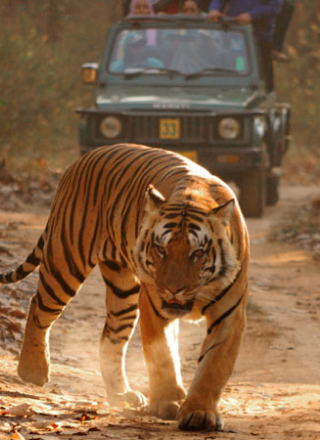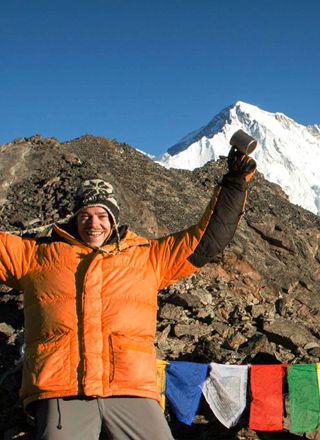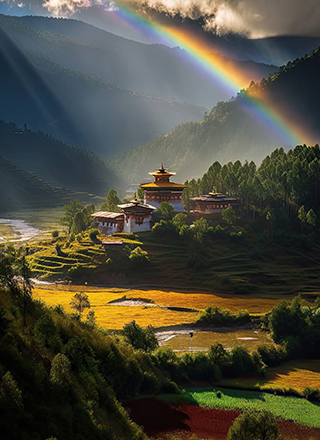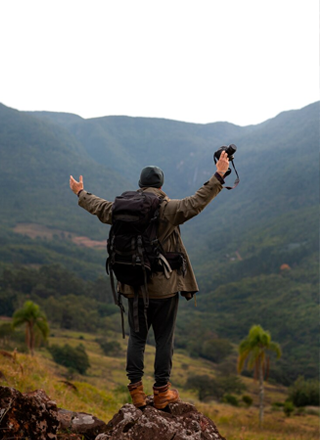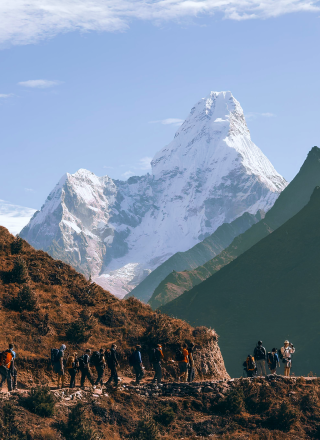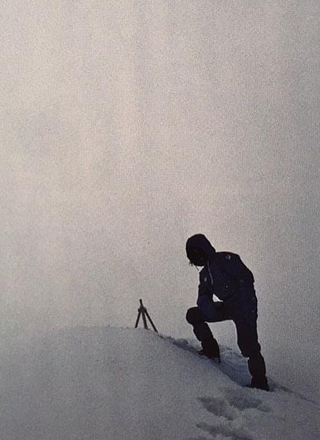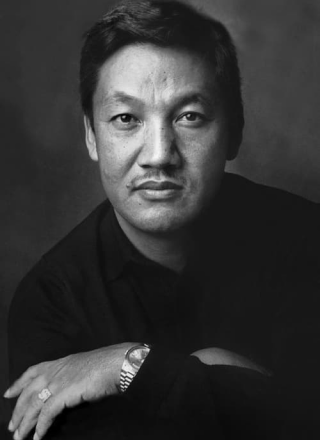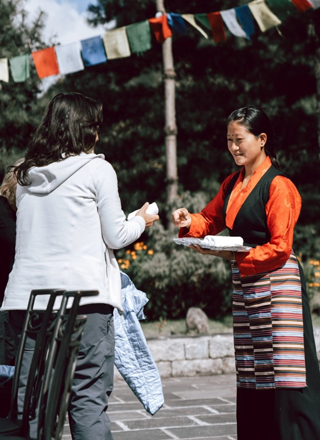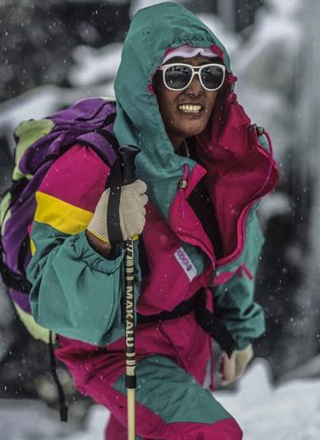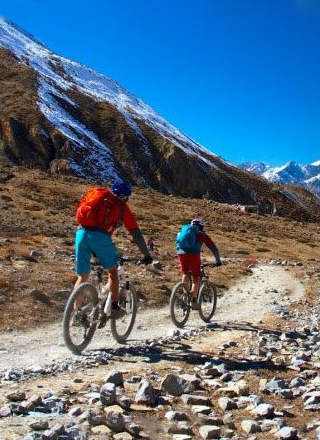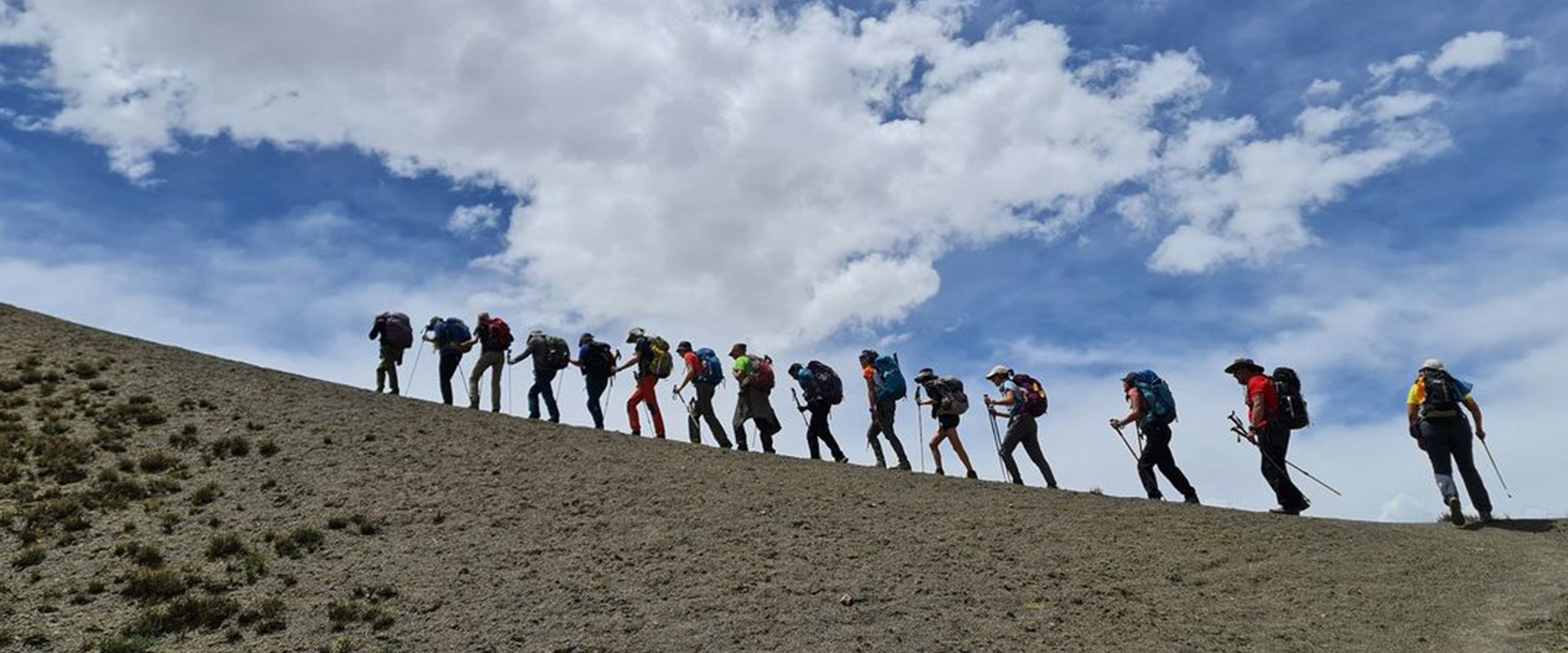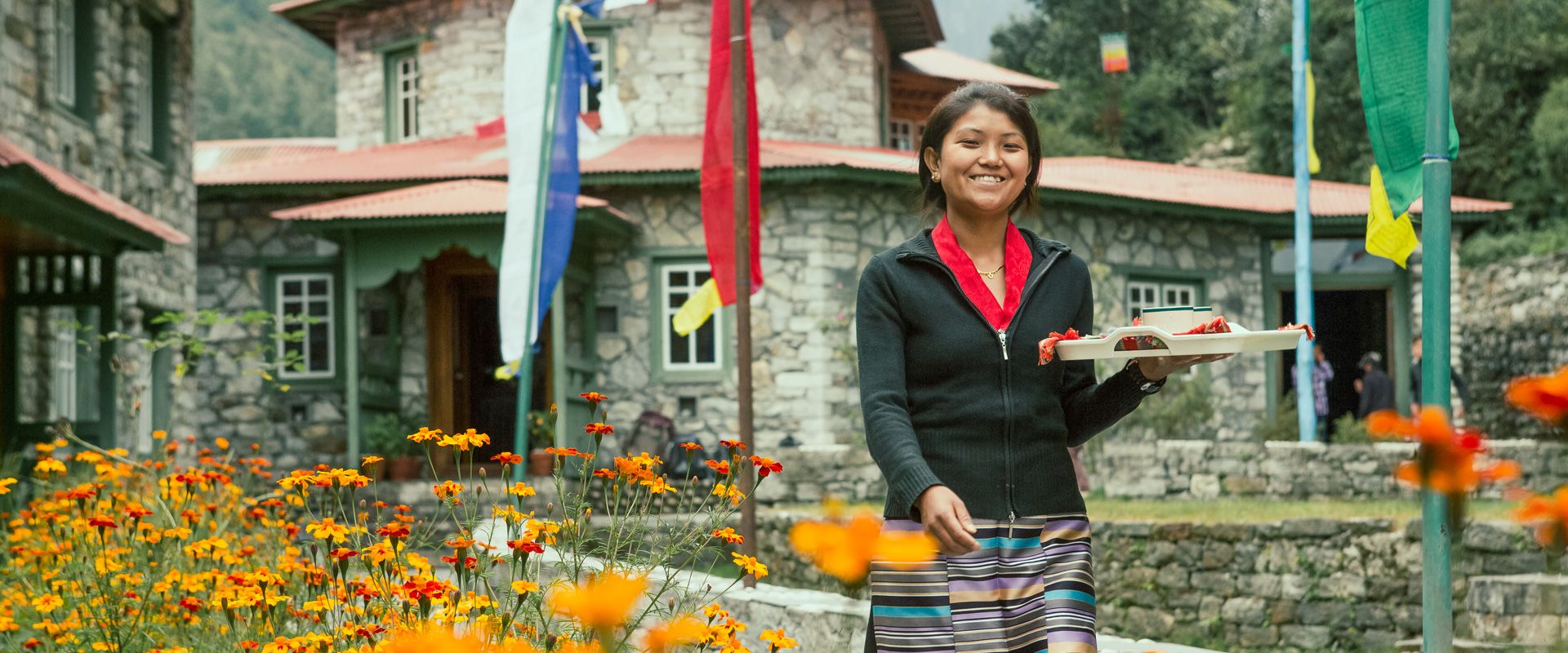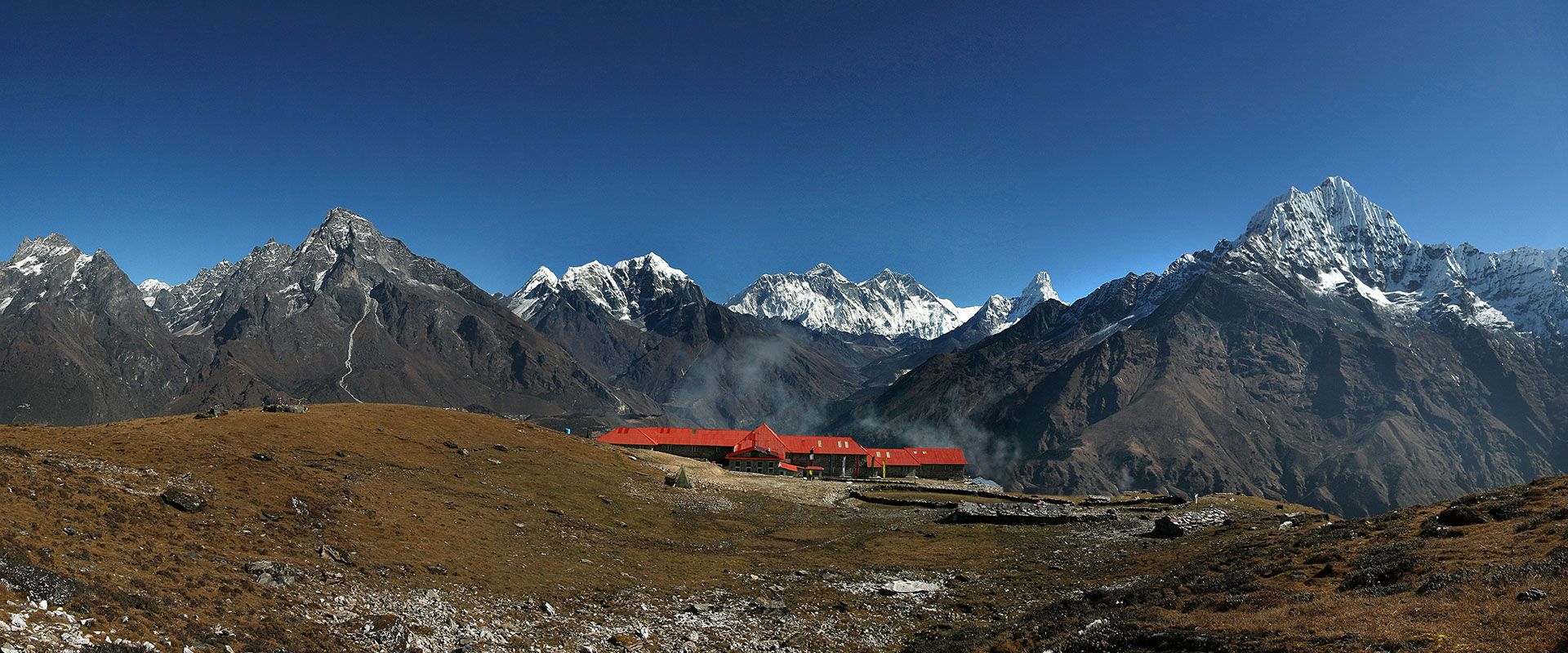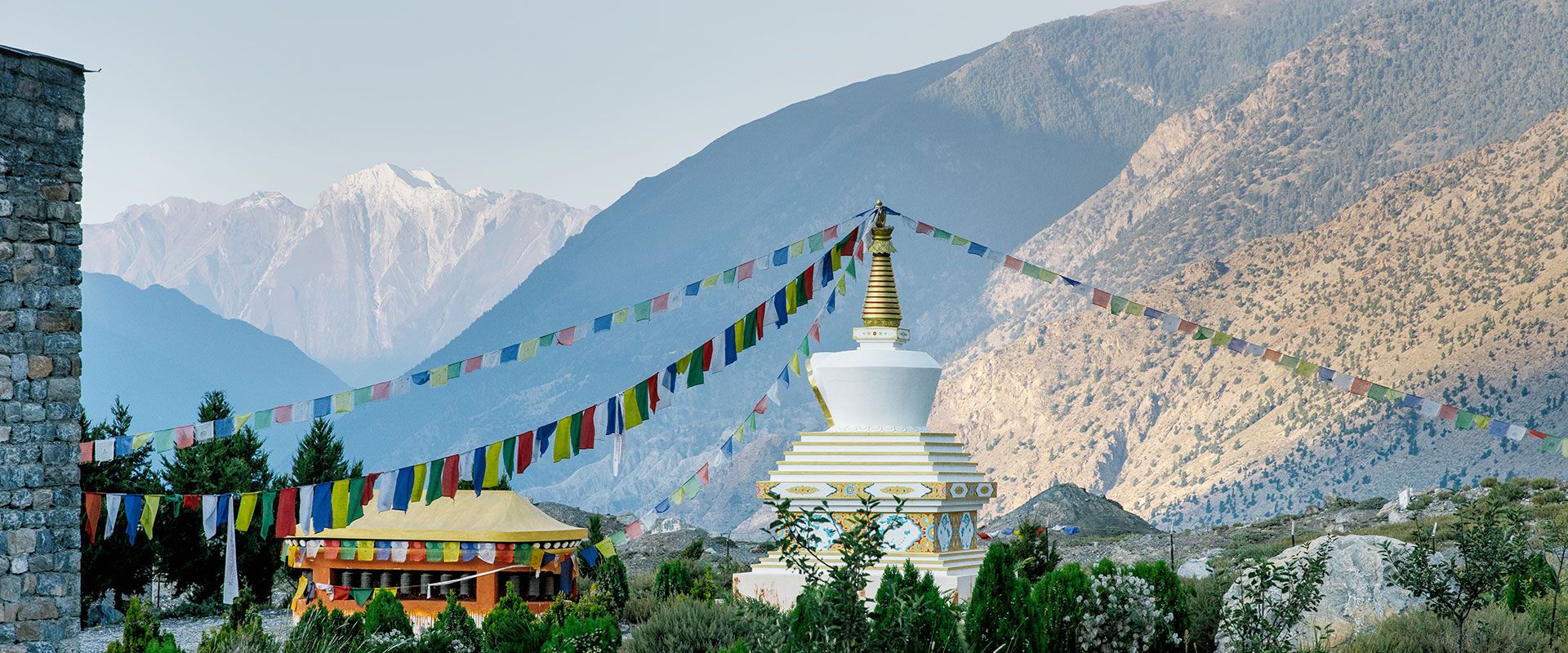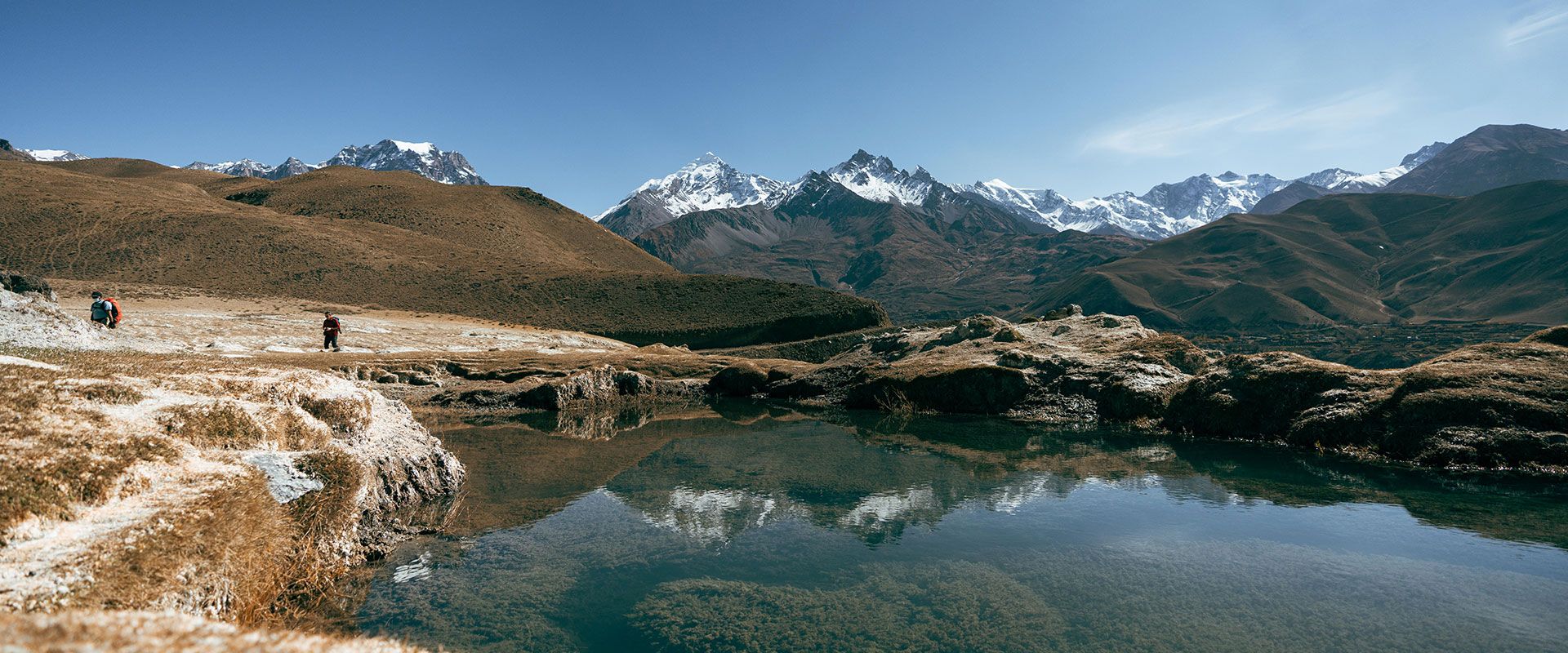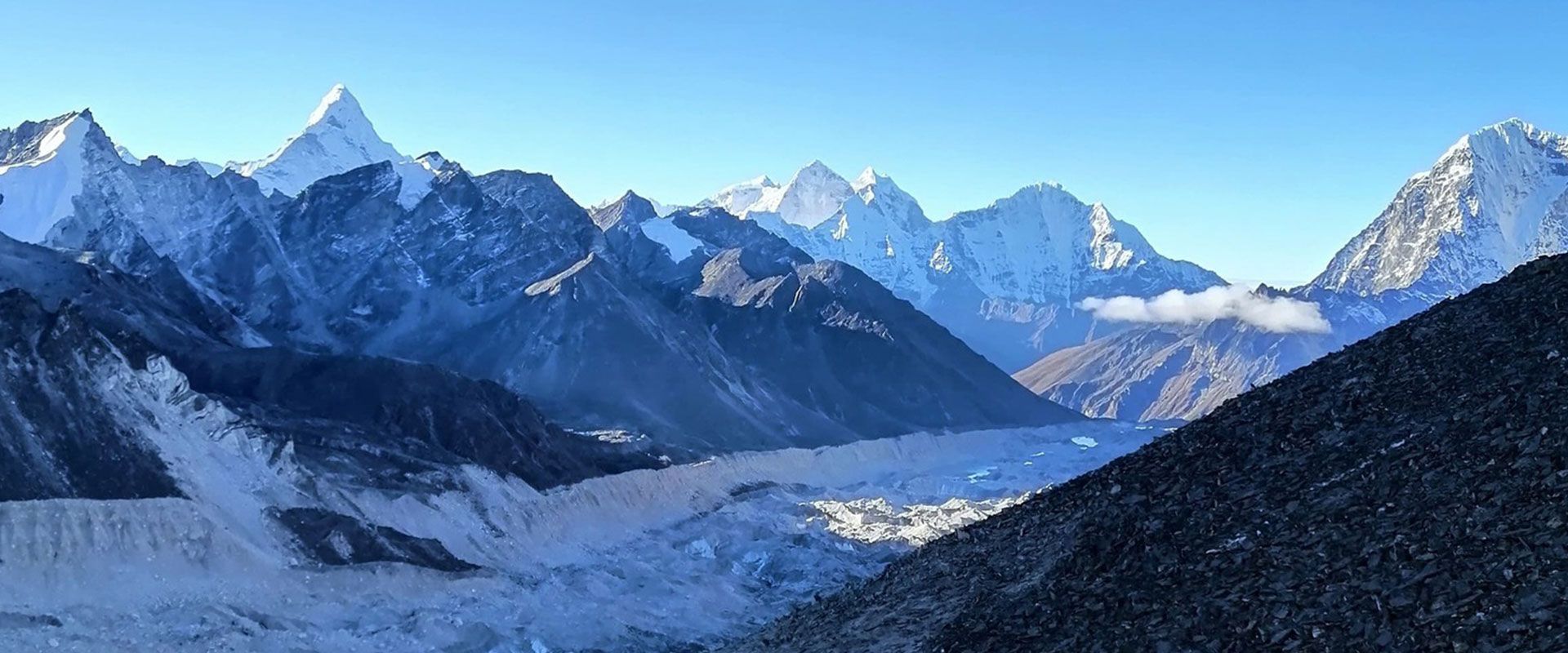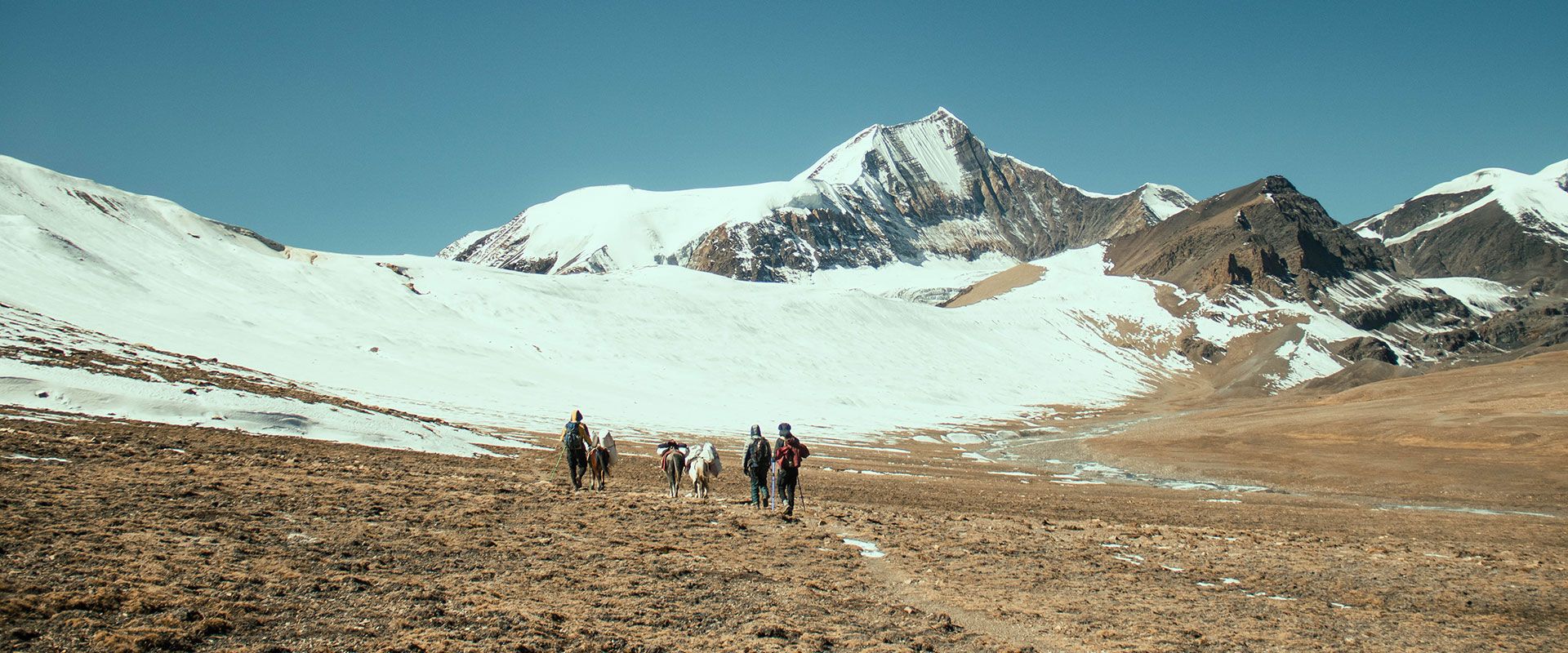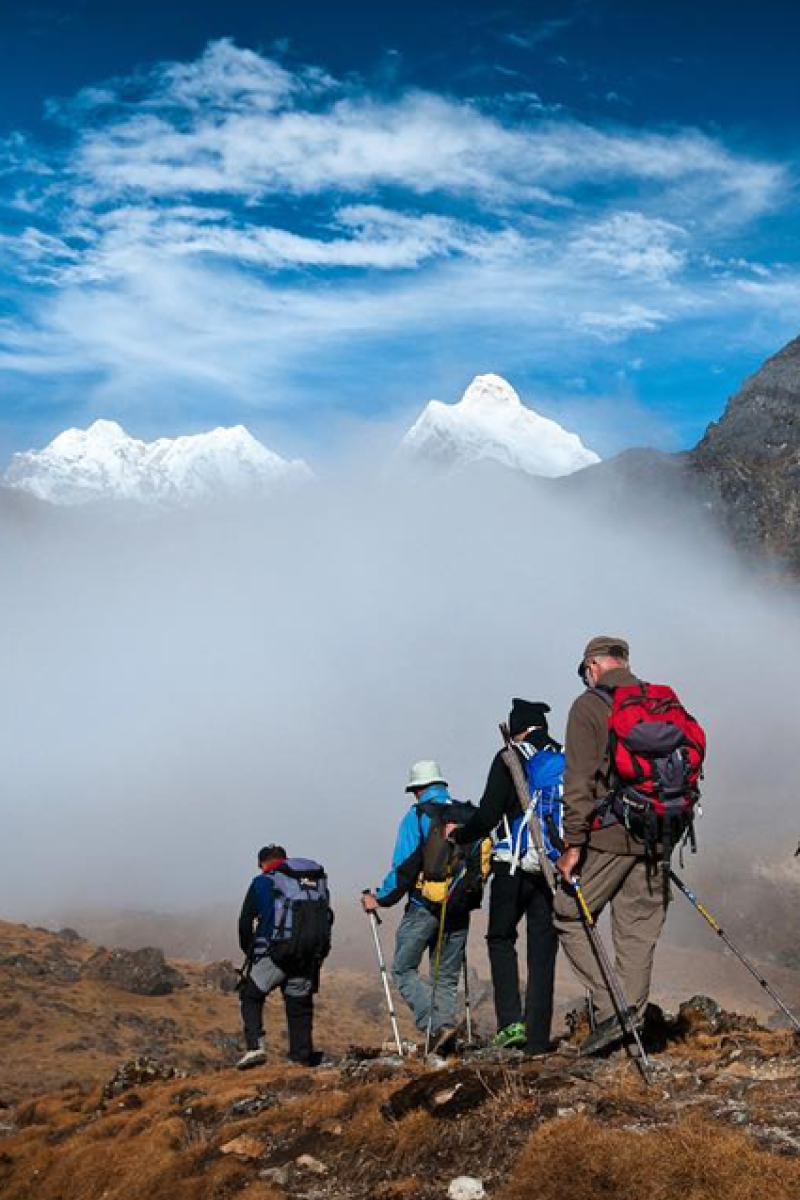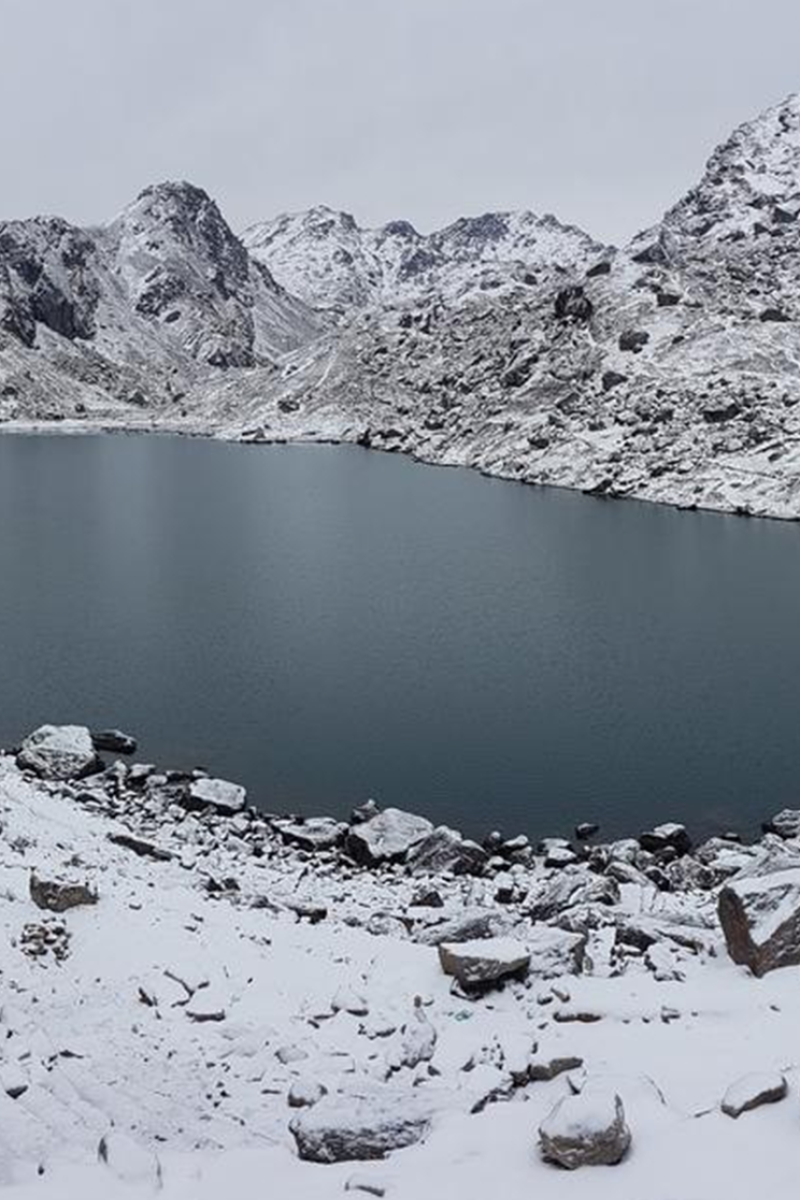- Travel Styles
- Destinations
- Signature & Charity Treks
- Special Project
- About Us
- Contact Us
15 days
14 Nights
Gokyo Trek
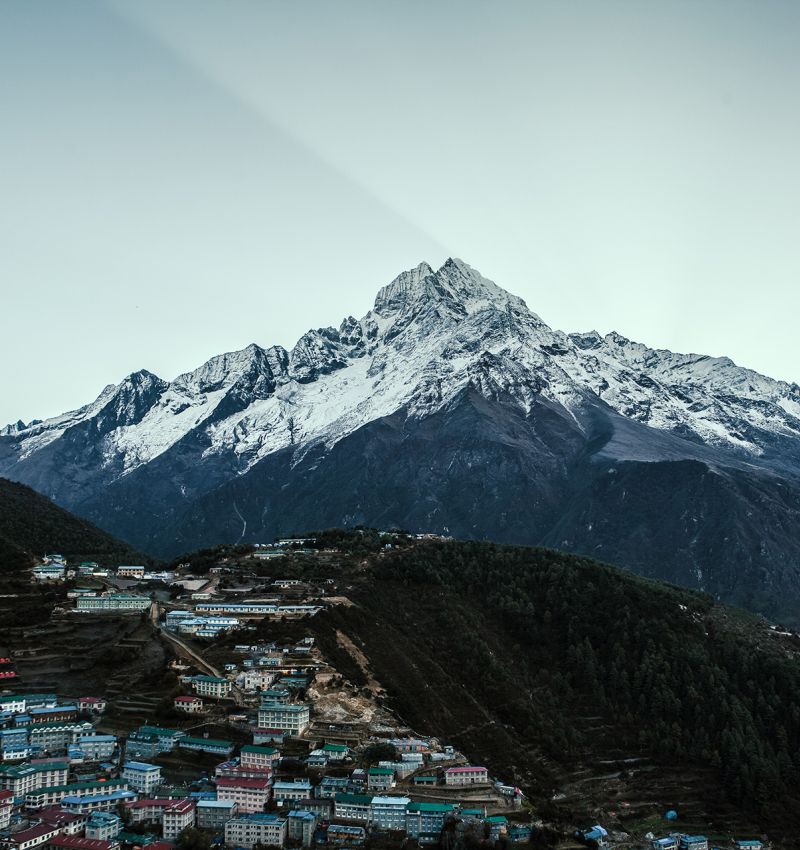

OVERVIEW
Beautiful lakes in the Gokyo Valley are part of the Everest Base Camp route, showcasing the landmarks of the Khumbu region in the company of regal, soaring mountains, friendly Sherpas, colorful monasteries, Namche Bazaar, and Sagarmatha National Park.
Trekkers must first land in Kathmandu, and the next day or two, they should take their flight to Lukla, the gateway to our trek to Gokyo. The maximum altitude level is 5,360 m at Gokyo Ri. Accommodations and meals can be arranged according to your requirements.
While on the flight to Lukla, you can see the range of the Himalayas. Upon landing in Lukla, we begin our trek towards Phakding, and then to Namche. After arriving in Namche, we need to acclimatize for a day, then advance our route to Dole and then to Machhermo.
Again in Machhermo, we must acclimatize for a day and leave the next day for Gokyo Village. Upon arriving in Gokyo Village, we take a rest day and hike to the fifth lake. Early the next morning, we summit Gokyo Ri and then trek to Phanga, Khumjung, Namche Bazaar, Phakding, Lukla, and back to Kathmandu.
It will be a life-changing experience with the magnificent sights of the Himalayas in the Khumbu region of Nepal.
Trip Overview
Destination
Region:
Activity:
Max. Altitude:
Type:
Group size:
Difficulty:
Highlights
- Visit the highest freshwater lake Gokyo.
- Experience the old Sherpa village and their lifestyle in Khumjung
- Visit Gokyo Ri and watch the views of Mt. Everest, Makalu and Cho Oyu
- Excursion to the fifth lake
- The world’s biggest glacier, ngozumpa glacier
ITINERARY
TAILORED TRIP FOR YOU
Arrival in Kathmandu
Depending on your arrival time, our representative will be at the airport to receive you and transfer you to your booked hotel.
Meals: B
Flight: Kathmandu – Lukla (2850m) – trek to Phakding (2610m) – 25 minutes flight / 3 hrs walk
After breakfast in the hotel, we drive to the domestic terminal of Kathmandu Airport for the 30-minute flight to Lukla. Landing on the narrow, sloping runway high above the Dudh Koshi River in the heart of the mountains is a very spectacular way to arrive. We will be staying 2 nights in Namche Bazaar to acclimatise. After meeting our porters we will take lunch at the Yeti Mountain Home Lodge and then start our trek with an easy, mostly downhill leg, from Lukla to Phakding. This trek takes us through pastoral lands of the Sherpas and we pass several small villages and individual farms. Many Sherpas now make their living exclusively from trekking and there are also many tea houses and basic lodges where it’s possible to stop for a drink or a chat. We will also pass by many stones intricately carved with prayers in the evocative Tibetan script, and prayer wheels of all sizes. Everywhere in the valley colourful strings of prayer flags flutter from high points and bridges. After 2-3 hours of trekking, we finally meet the river and reach our first lodge at Phakding located beside the tumbling Dudh Koshi. The altitude at this first stop is actually lower than Lukla at 2610m.
Meals: BLD
Trek to Namche (3440m) – 5 hrs trek
After breakfast we trek towards Monjo. The gently undulating trail follows the right bank of the Dudh Koshi through Phakding village before the first of several river crossings today on wire suspension bridges. Continuing through pine forest and small villages we come to a break in the trees to catch sight of the mighty Thamserku (6623m) towering way above. A couple more hours of woodland trails and swaying bridges brings us to the small village of Monjo.
We stop to have a look at the interesting 3D map and information boards whilst our guide sorts out our permits and entry. From here we’ve another 40 minutes or so along the sides of the Dudh Khosi before crossing the Bhote Khosi and beginning our climb to the Sherpa capital of Namche Bazaar. The trail zigzags up away from the river, gradually ascending to the tree line opening out into a high mountain bowl and the vibrant village of Namche. We pass through the many tiny shops and colourful stalls picking our way slowly up hand cut stone steps to our wonderful Yeti Mountain Home Lodge. This is our first night above 3000m so it’s important to take it easy and let your body adjust. Relax with a tea or coffee and maybe even take a massage in our spa.
Meals: BLD
Acclimatization day in Namche
Situated at high altitude, Namche Bazaar serves as an acclimatization stop for climbers to avoid altitude sickness. Namche Bazaar is the main center of the Khumbu region and is facilitates with government offices, internet, ATM’s, restaurants and a colourful market. You can also take a half-day excursion to the internationally known Museum of Sherpa Culture and the traditional villages of Khunde and Khumjung. The location of our lodge is superb giving us a bird’s eye view over Namche and across the Valley to the serrated ridges of the Kongde range, while the magnificent peak of Thamserku (6623m) rises as a backdrop. Just a short walk away is a classic view of Ama Dablam, one of the most beautiful mountains in all Nepal and of Lhotse and Everest. This is an ideal place to spend the day, acclimatising to the new altitude before heading further up-valley to Thame.
Meals: BLD
Trek to Dole (4200m)
Today we advance to reach our next destination. We climb towards the Khumjung hill and step down to the east of the village following the broad valley advancing to the Dudh Koshi from where the route turns north. We visit Mong, the birthplace of the reincarnated Lama of Tibet who is believed to have introduced Buddhism in the Khumbu region of Nepal. The Trail descends in a series of steep switchbacks down a slope to the Phortse Thanga. Afterward, we move alongside a rhododendron forest and pass through a waterfall before reaching to Tenga and overnight in Dole.
Meals: BLD
Trek to Machhermo (4470m)
We continue our uphill trek and pass through Dole. Throughout today’s journey we will be walking alongside the Dudh Koshi River. Approximately, it will take 4 – 5 hours to reach Machhermo from Dole. The small and thorny bushes give way to scrub juniper as the altitude increases. The trail passes many summer settlements, where yaks are taken to these places to graze in the summer. Ahead of you are magnificent views of Cho Oyu, while back down the valley are the peaks of Kantega and Thamserku.
Meals: BLD
Trek to Gokyo village (4790m)
Today, the valley now widens as the trail passes through the very scenic path to Phangkha. We then descend slightly, following one of the melt-water rivers which flow down the west side of the Ngozumpa Glacier. Upon crossing an iron bridge over a stream, the trail levels out as it follows the valley pass the first lake, known as Longpongo. At this point, we get a chance to observe lama’s footprints on a stone. We soon arrive second of the lakes which shimmer turquoise blue sheet of water sparkling in the sun. Walking by the side of the lake, the scenery is magnificent with the summits of Cho Oyu and Gyachung Kang reflected in its emerald green waters.
Meals: BLD
Gokyo village (rest day – hike to fifth lake, 4870m)
Gokyo is one of the trade centers, where the Sherpa people run lodges to provide the best services to the trekkers. Gokyo itself is located by the side of Ngozumpa glacier, the biggest glacier of Nepal. We can spend this day taking a rest in the Gokyo valley and hike to the 5th lake. If we want to, we can climb a hill, also called the Scoundrel’s Viewpoint, which is located at the edge of the 5th lake. From here we get magnificent views of Cho-Oyu, Gyachung Kang, Mt. Everest, Lhotse, Nuptse, and Makalu mountains.
Meals: BLD
Trek to Machermo (4470M)
Today we descend towards Machermo via Phanga and Longonga retracing back the same way we came upto Gokyo
Meals: BLD
Trek to Dole
While on the descent, the views during the return have a different point. The trail meanders around the constantly changing obstacles and affords great views of Cho Oyu and Cholatse.
Meals: BLD
Trek to Namche (3440m)
From Dingboche, we descend towards the Namche via the main trail of Dingboche – Somare – Pangboche – Tengboche – Namche. Due to the up and down trail, it will consume around approximately 8 hours to reach Namche Bazaar. The night will be at Namche Bazaar at one of the best lodges of the place.
Meals: BLD
Accommodation: YMH Namche
Trek to lukla (2840m)
After overnight at Namche, early morning we will descend back to Lukla. The trekking though the trail will be exciting as well as easier as it will go through the forest of rhododendron and pines. We will pass Monjo after a short walk and then to Phakding. We stay on the same trail and advance towards Nurning and approximately 8 hours of the trek we will finally be reaching Lukla.
Meals: BLD
Flight: Lukla-Ktm, transfer to hotel
We will enjoy our last view of the high mountains while flying back to the Kathmandu from Lukla. The snow-capped mountains will be worth to watch. After 25 minutes of flight, our representative will be waiting for you at domestic airport to take you back to the hotel where you can enjoy your chilled beer and warm shower.
Meals: B
Free day in Kathmandu
You’ll have a day free in Kathmandu Valley and enjoy your time.
Meals: B
Final departure
Depending on your flight time you will be transferred to the airport. The airport checks in is 3 hours prior to the departure time and the hotel checkout time is 12 PM. In case our flight is late evening please let us know if you require half day use of the hotel.
Our representative will meet you at the hotel and transfer you to the airport.
Meals: B
Included
- 3 nights in Kathmandu Hotel as per program on Bed & Breakfast basis
- 11 nights Local Lodge as per program on Full Board
- Flight: KTM-Lukla-KTM (Regular Flight) with airport taxes
- Everest National Park Fees & TIMS Permit Fee
- 1 English Speaking Guide (from Kathmandu)
- 1 porter for every 2 members
- All staffs insurance & daily wages
- All Airport transfers
Not Included
- Lunch & Dinner in Kathmandu
- Personal Equipment & Insurance
- Personal Expenses (Battery recharge on local lodge, laundry, telephone, etc)
- Nepal Visa fee US $40 per person
- Emergency Evacuation if required
- Other personal Expenses
- Tips for Staffs
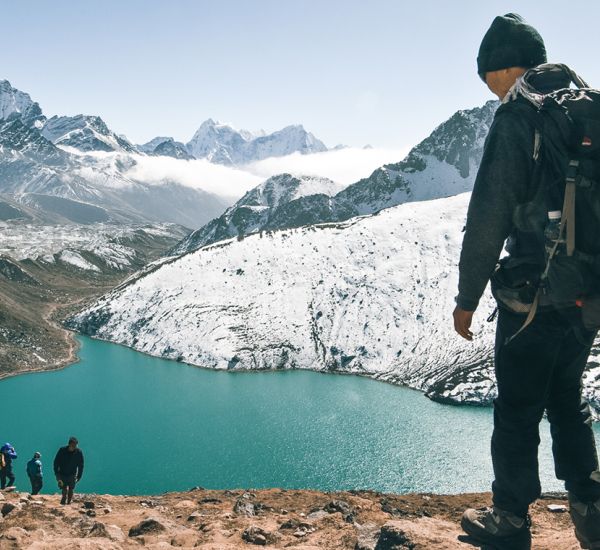
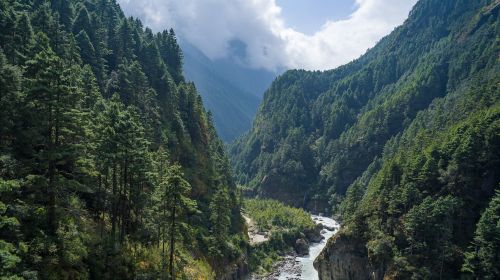

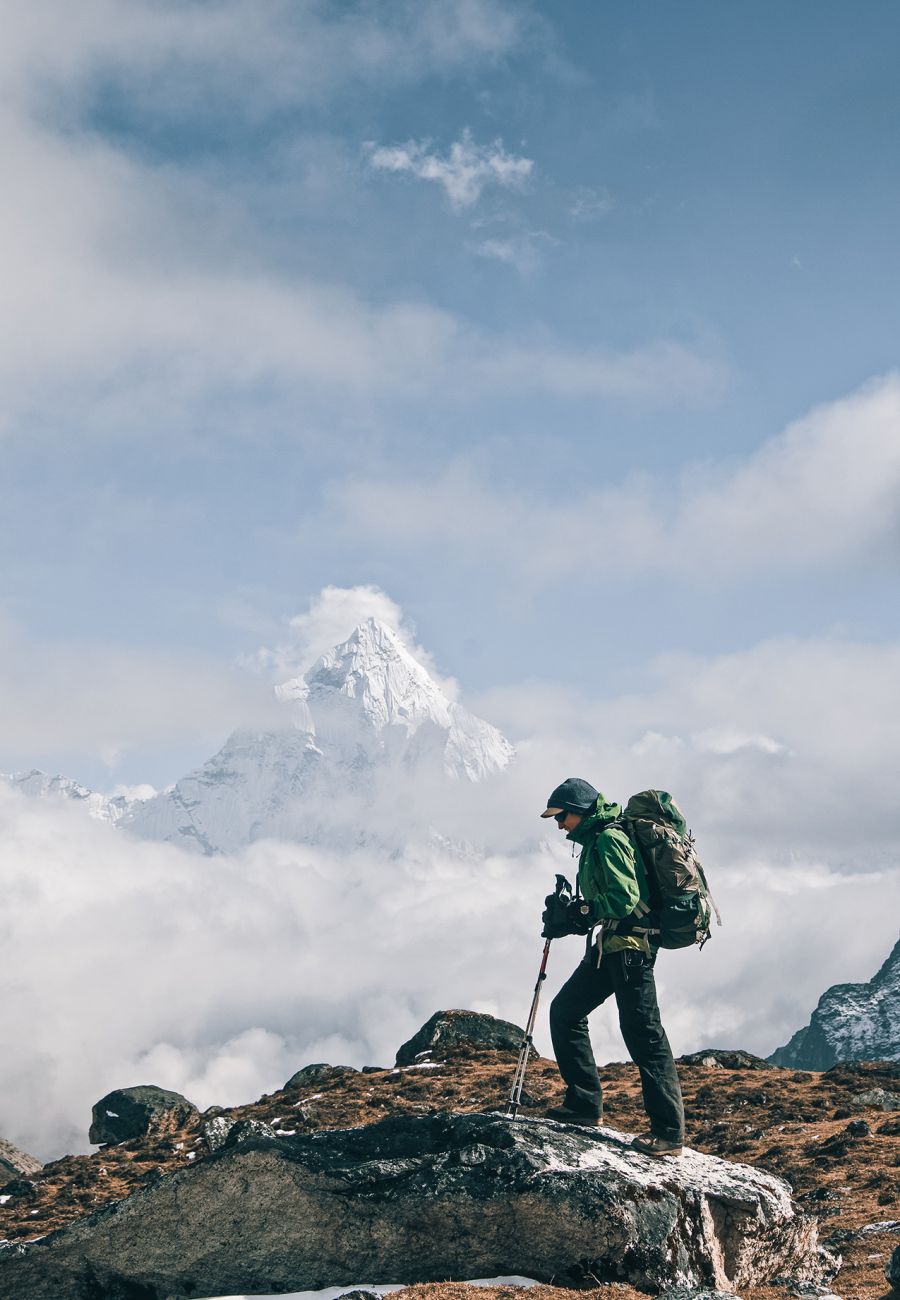

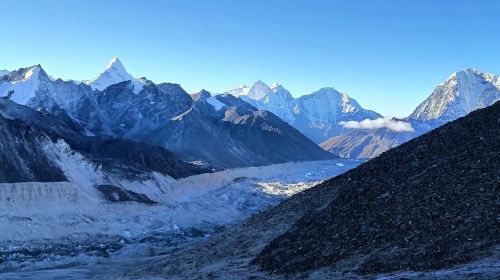
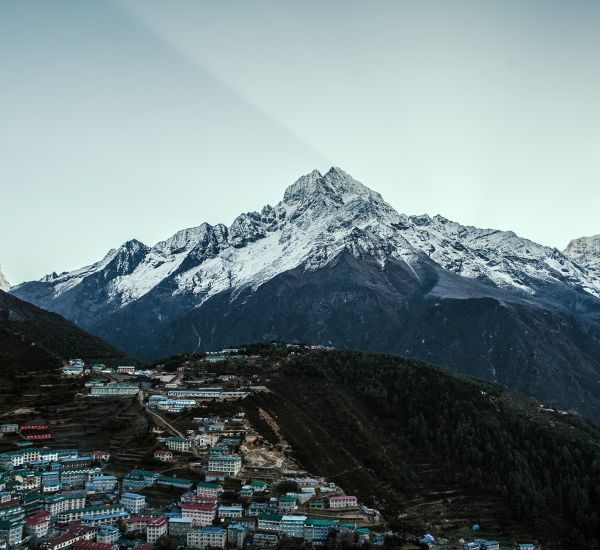
ACCOMMODATIONS
WHERE YOU WILL STAY
This tour spends 3 nights in a hotel in Kathmandu, and eleven nights on the trek in lodges (tea houses).
In Kathmandu, we normally use a 3-star hotel, located within walking distance of the Thamel.
On the trek, we will stay in teahouses for the most part. Some days there may be no tea house at lunchtimes – on these days we carry a packed lunch. The tea houses are basic but adequate; please be realistic about what to expect in the mountains.
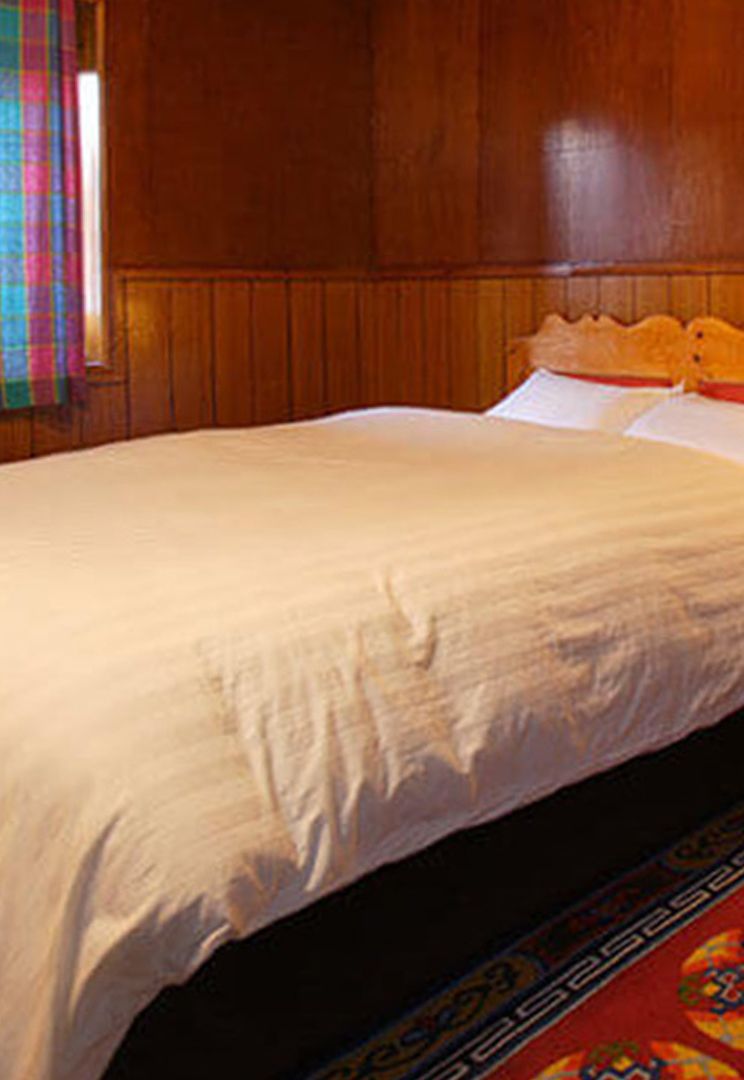
YMH Namche
FAQs
ESSENTIAL INFO
adventure that speaks to your heart.
Most nationalities require a visa for Nepal, which can be obtained in advance or on entry. If you wish to apply before departure the current visa cost is £20 for a 15 day visa and £35 for a 30 day visa for UK passport holders. The current cost of a visa on arrival is US $25 for 15 days, US $40 for 30 days or if extending your stay $100 for 90 days. All are multiple entry. The visa on arrival fee can be paid for in cash in US Dollars, Pounds Sterling or Euros. You will also need a passport photo. Application forms are available in the immigration hall (or for electronic passports there are visa registration machines which, after inserting your passport, automatically fill out a form for you). You must firstly join the queue to pay the visa fee, and then go to the relevant immigration desk to obtain your 15, 30 or 90 day visa stamp. There can be long queues for visas on arrival.
Non UK nationals should check requirements with their nearest embassy (a few nationalities are not permitted visas on arrival).
There are no mandatory vaccination requirements. Recommended vaccinations are: Polio, Tetanus, Diphtheria, Typhoid, Hepatitis A. The risk of malaria is present in certain regions only (such as Chitwan); you may wish to consult your GP or travel health clinic for further advice. Dengue fever is a known risk in places visited. It is a tropical viral disease spread by daytime biting mosquitoes. There is currently no vaccine or prophylaxis available for Dengue, and therefore the best form of prevention is to avoid being bitten. We recommend you take the usual precautions to avoid mosquito bites. Most of our trips to Nepal go to high altitudes where there is a risk of being affected by Acute Mountain Sickness. Our itineraries are designed to enable everyone to acclimatise to these altitudes, but you should be aware that it is still possible for you to be affected. Please refer to the TRIP NOTES for complete advice on AMS.
Breakfast is included throughout the trip and all meals are provided while camping (all breakfasts, 3 lunches and 2 dinners).
Breakfast is included throughout the trip and all meals are provided while camping. On trek the breakfast will be a set menu usually consisting of porridge and toast. Any additional items that are not included in the set menu should be ordered and paid for separately. We do not include lunch and dinner in the tea-houses, allowing you to choose what you want to eat and when. Although most lodges have almost identical menus, they are reasonably extensive and offer a varied selection, ranging from traditional Nepalese dal bhat to pizza and apple pie.
Although meat is available in the tea houses, we advise against eating it on trek. The meat has often been carried in the heat from lower altitudes for several days before reaching the lodges, and can cause stomach upsets or illness. Germs can also be spread by handling dirty money – we recommend using hand sanitiser.
If you buy imported food and drink whilst on trek you will spend more than the suggested amount.
Drinking Water
Staying hydrated is important when undertaking any physical activity but particularly so at altitude where it is generally recommended to drink at least 3-4 litres per person per day.
We strongly encourage you not to buy bottled water on trek as this contributes to the growing problem of plastic pollution in Nepal’s trekking areas.
All tea houses will provide cold water free of charge, if requested. Although this should not be drunk untreated, we recommend that you bring a reusable bottle with a wide opening (Nalgene or similar) with you and use a SteriPEN to treat it with. A SteriPEN is a handheld UV water purifier – small, lightweight and battery powered so easy to pack for a trek. In Nepal’s trekking regions most of the bottled water isn’t strictly ‘mineral water’ anyway but is UV treated, so it’s exactly the same technology. It’s quick to use, far more effective than purification tablets, and the water is ready immediately. It’s fine to use a SteriPEN on non-boiled water so long as it isn’t cloudy or full of sediment (which is uncommon in these regions).
SteriPENs are widely stocked on Amazon, outdoor shops and other online retailers; look for the latest models but avoid USB charging ones. Better still, a SteriPEN will pay for itself over the course of the trek and you won’t leave behind a single plastic bottle – you will end up spending the same or even less than you would on bottled water, plus you can keep it for future trips.
If you prefer not to invest in a SteriPEN, the tea houses also sell boiled water for approx. Rs150-300 per litre (the price increases the higher you trek) which should not require treating. This is also perfect for a bedtime refill as it can double up as a hot water bottle.
While camping boiled water is supplied for drinking.
The main trekking season in Nepal is from October to mid-May when daytime temperatures at most altitudes are generally comfortable for walking, the sky is clear much of the time and rain and snow are occasional occurrences. Daytime temperatures will vary from 15ºC to 35ºC in the Kathmandu Valley to around 10ºC at 3,600m and progressively lower the higher we go.
Different seasons offer different advantages for trekking.
Post Monsoon/autumn: Mid-September to November. This is the main trekking season in Nepal. Day temperatures in Kathmandu are approximately above 20ºC. Skies are usually clear and days on trek are sunny and mild with clear mountain views. At the highest altitudes although the days can be nice and sunny the temperatures can drop to 10ºC and much lower. Nights will be colder with temperatures dropping as low as minus 10ºC and lower at the highest altitudes.
Pre-monsoon/spring: March to May. Both day and night temperatures will be warmer in general but haze will often build up in the afternoons. It is very hot in the lowlands and temperatures rise to 35ºC in Kathmandu. Flowers bloom in this season and this is one of the reasons people chose to trek in spring.
Snow can be expected on any departure, usually at the higher altitudes. Summit day will be a very early start (usually about 2am) and will be extremely cold. Although mostly it is calm and clear on summit day the mountain does occasionally get high winds. You need to be equipped for temperatures as low as minus 25ºC plus wind chill on summit day.
Please remember that in any mountain area the weather is never wholly predictable and you should be prepared and equipped to deal with any differences in weather beyond the conditions described above.
This is a Tough+ trek. It is activity level 9 with 16 days walking and full porterage throughout. The maximum altitude is 6,189m (or 5,545m without Island Peak) and the average is 3,680m. There are some steep ascents and descents and some narrow trails. As this trek also ascends to very high altitudes participants should be confident of their physical fitness and must have previous experience of trekking at altitude and in snow.
Although it is not compulsory to participate in the climb (the summit attempt is optional), anyone who does must have previous ice axe and crampon experience and know how to use a jumar and abseil device. There will be equipment checks and practice sessions for rope use, ice axe, crampon and harness use, abseiling and crevasse rescue. For safety reasons it is compulsory to participate in these sessions. If you do not take part the leader and climbing Sherpas will not allow you to take part in the climb.
Though technically harder than Mera Peak, for those with the necessary experience this expedition is within the reach of those seeking their first Himalayan summit. The climb requires strong lungs and a great deal of will power – it is graded alpine PD+ and starts with some rocky scrambling to a glacier. We cross the glacier roped up (there is one ladder to cross), and then come to a 200m steep 40-45 degree headwall, which leads to a 20m summit ridge. We will rope up to cross the glacier and you will be walking with an ice axe, crampons and plastic boots. There are fixed ropes up the headwall (approximately 200m) and along the summit ridge. On the ascent you will need to use a jumar and on the descent you will need to use an abseil device.
Please be aware that altitude can have a significant affect on your physical state. It is important that you take heed of the leader’s advice and decisions at all times. The leaders are trained in first aid and are well aware of AMS symptoms and will keep a close eye on the group. We ask you to refer to the altitude warning within the Trip Notes.
The climb itself is not recommended for anyone with a fear of heights or vertigo and the main trail itself crosses three modern suspension bridges over rivers and valleys – all of these have mesh sides but some are quite long and high.
ESSENTIALS
EQUIPMENT CHECKLIST
Ensure you have all the essentials to make your trip
safe and enjoyable.
Body Wear
- Gore Tex Jacket
- Gore Tex Pant
- Hiking pant
- Fleece trouser and jacket or warm jumper – Recommended not thick but warm enough that fits inside the Gore Tex pant
- Anti-sweat T-shirtEarmuffs/Ear warmers (optional)
- Thermal inner trouser
- Down jacket with hoodie
- Thermal inner trouser
- Down jacket with hoodie
Head Wear
- Sun Hat/Normal cap
- Fleece or woolen hat
- Earmuffs/Ear warmers (optional)
- Sunglasses with UV protection
- Buff Scarf / thin face mask
Hand Wear
- Fleece or woolen thin gloves
- Expedition shell gloves
- Gore Tex mitten gloves
Other Equipments
- Sleeping bag (comfort rated – 15ºC)
- 30 Litre Rucksack with cover
- Large size Duffel Bag with padlock
- Headlamp with spare batteries
- Water bottles 1 Litre X 2
- Thermos
- Basic First Aid Kit including: antiseptic cream, throat lozenges, diarrhea treatment (Imodium), altitude (Diamox), painkillers, plasters and blister treatment, insect repellent, and re-hydration salts (Dioralite). Glucose tablets and multi-vitamin tablets are also a good idea.
Washing kit & Toiletries
- Waterproof washing kit bag
- Towel – medium size
- Washing soap, towel, tooth pest, tooth brush etc.
- Sun Lotion Enough +30SPF (including total bloc for lips, nose etc.)
- Hand wash & sanitizer
- Toilet paper (you can buy this in the lodges)
- Wet tissue
Foot Wear
- Trekking boots
- Hollow Out Outdoor Slipper
- Trekking socks (4-5 pair)
- Snow Gaiter
Optional Items
- Trekking poles
- Trainers or similar for use in the lodges
- Shorts
- Base layer leggings
- Gaiter
- Sleeping bag liner
- Pillowcase
- Ear plugs (particularly if you are not the one snoring)
- Travel clothes
- Camera
- Pen-knife (remember to pack sharp objects in hold baggage)
- Repair kit – (egg. needle, thread, duct tape)
“Six out of Six”
Yeti Mountain Home Thame was the third of six Yeti Mountain Homes we stayed in. Loved the ambiance. Loved the village. A huge bedroom. Once again – brilliant food and warm welcoming staff. The decor was stunning and the house arrangement interesting.
LOIS OMAN

“Six out of Six”
Yeti Mountain Home Thame was the third of six Yeti Mountain Homes we stayed in. Loved the ambiance. Loved the village. A huge bedroom. Once again – brilliant food and warm welcoming staff. The decor was stunning and the house arrangement interesting.
LOIS OMAN

“Six out of Six”
Yeti Mountain Home Thame was the third of six Yeti Mountain Homes we stayed in. Loved the ambiance. Loved the village. A huge bedroom. Once again – brilliant food and warm welcoming staff. The decor was stunning and the house arrangement interesting.
LOIS OMAN

FEATURED JOURNEYS
ALSO SEE THESE TRIPS
We have handpicked some of our favourite iconic Nepal trips we think you will love.
ENQUIRY
CONTACT OUR TRAVEL EXPERTS
within 24 hours.
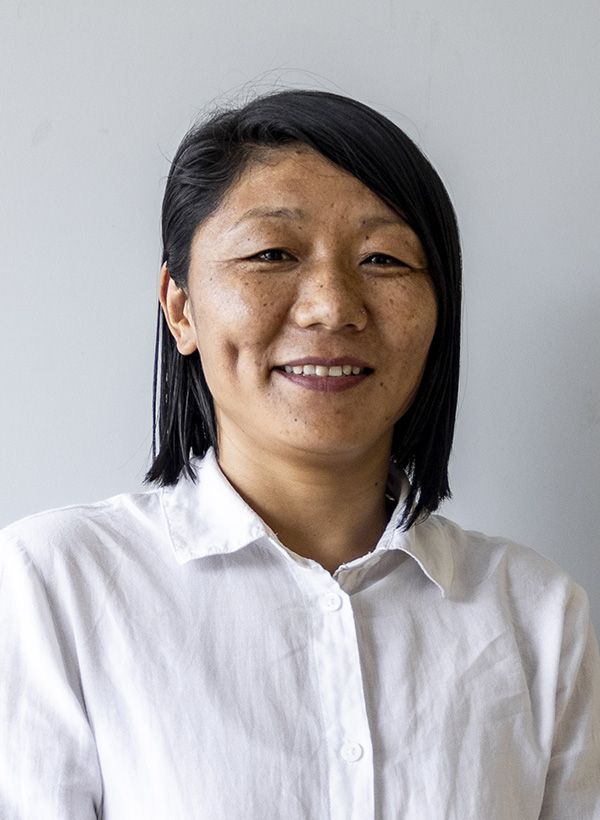
NIRMALA GURUNG 
+977 9801223978
nirmala@thamserku.com
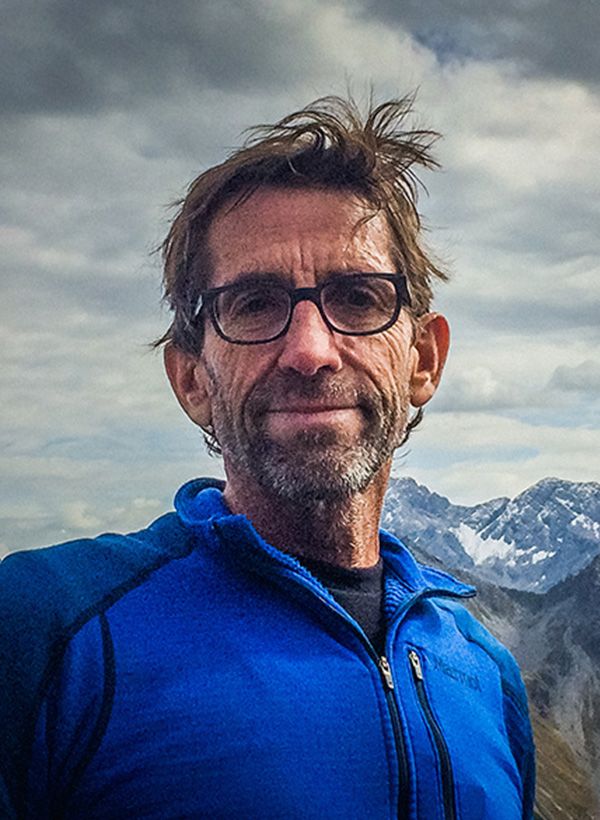
MICHAEL SCHOTT 


+49 174 9755492
m-schott@neumann-grafik.de
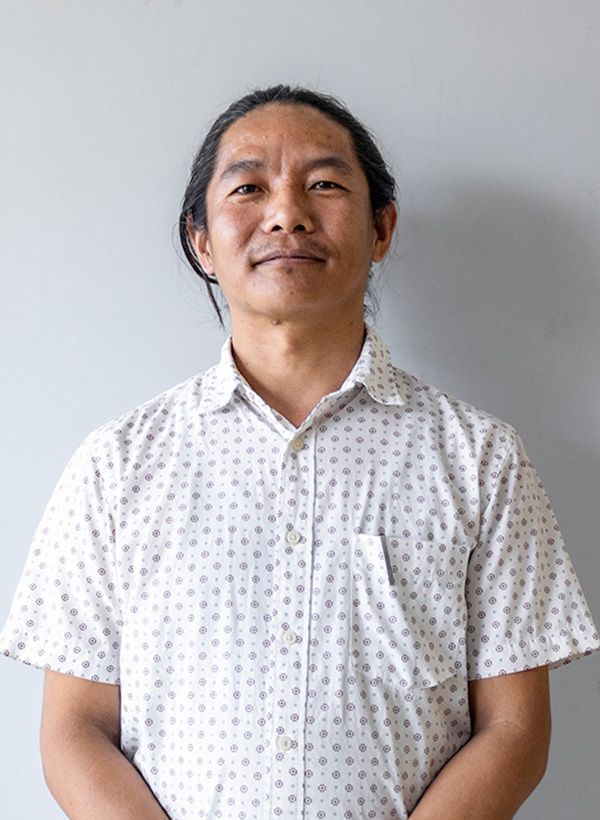
KUMAR RAI 
+977-9801236280
kumar@thamserkutrekking.com
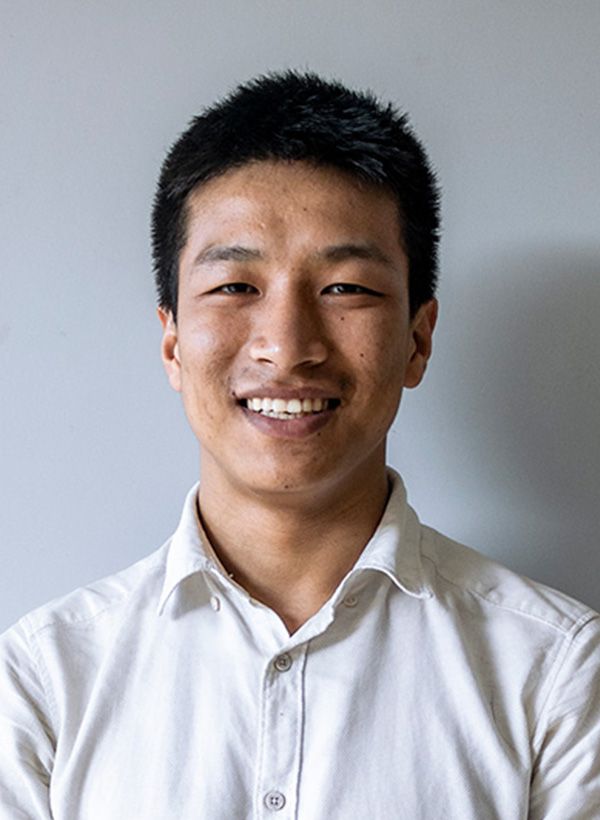
NIMTE SHERPA 
+977-9801223977
info@thamserkutrekking.com
BOOK YOUR TRIP BOOK YOUR TRIP BOOK YOUR TRIP BOOK YOUR TRIP BOOK YOUR TRIP BOOK YOUR TRIP BOOK YOUR TRIP BOOK YOUR TRIP BOOK YOUR TRIP BOOK YOUR TRIP BOOK YOUR TRIP BOOK YOUR TRIP BOOK YOUR TRIP BOOK YOUR TRIP BOOK YOUR TRIP BOOK YOUR TRIP BOOK YOUR TRIP BOOK YOUR TRIP BOOK YOUR TRIP BOOK YOUR TRIP BOOK YOUR TRIP BOOK YOUR TRIP BOOK YOUR TRIP BOOK YOUR TRIP BOOK YOUR TRIP BOOK YOUR TRIP BOOK YOUR TRIP BOOK YOUR TRIP BOOK YOUR TRIP BOOK YOUR TRIP BOOK YOUR TRIP BOOK YOUR TRIP BOOK YOUR TRIP BOOK YOUR TRIP BOOK YOUR TRIP BOOK YOUR TRIP BOOK YOUR TRIP BOOK YOUR TRIP BOOK YOUR TRIP BOOK YOUR TRIP BOOK YOUR TRIP BOOK YOUR TRIP
